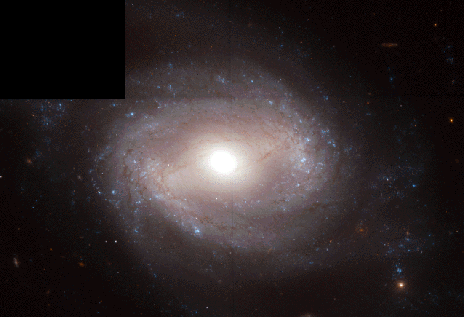Astronomy Picture of the Day
Discover the cosmos!
Each day a different image or photograph of our fascinating universe is
featured, along with a brief explanation written by a professional
astronomer.
May 14, 1996

Hubble's Constant and The Expanding Universe (II)
Credit
A. Sandage (Carnegie Observatories)
et. al. and
NASA
Explanation:
In this century, the discovery that the Universe is
expanding has produced a revolution in
human thought about the Cosmos.
American astronomer
Edwin Hubble
played a major role in this profound discovery, coining
the "Hubble constant". This single number describes the rate of the cosmic
expansion, relating the apparent recession velocities of external galaxies to
their distance.
Two groups of astronomers
trying to measure this fundamental constant
using the Hubble Space Telescope (HST) are continuing to report
conflicting results.
One group, led by astronomer Allan Sandage,
measures distances to galaxies using pulsating
Cepheid variable stars and
supernovae observed in galaxies like the
Virgo Cluster spiral galaxy, NGC4639, shown above. This galaxy
is the most distant one to which Cepheid-based determinations have been made
and was also the site of a well-studied 1990 supernova.
Their results favor a relatively small Hubble constant (slow expansion rate)
of about 55 kilometers per second per megaparsec which means that galaxies
one megaparsec (3 million lightyears) distant appear to recede from
us at a speed of 55 kilometers per second.
A substantially faster expansion rate (larger Hubble constant)
is being reported by astronomer Wendy Freedman and collaborators, also
based on HST data.
The value of Hubble's constant was recently the subject of a popular
public debate titled
"The Scale of the Universe 1996: The Value of Hubble's Constant".
Tomorrow's picture: The Milky Way Near the Northern Cross
| Archive
| Index
| Search
| Glossary
| Education
| About APOD |




Authors & editors:
Robert Nemiroff
(GMU) &
Jerry
Bonnell (USRA).
NASA Technical Rep.:
Sherri
Calvo.
Specific rights apply.
A service of:
LHEA
at
NASA/
GSFC




